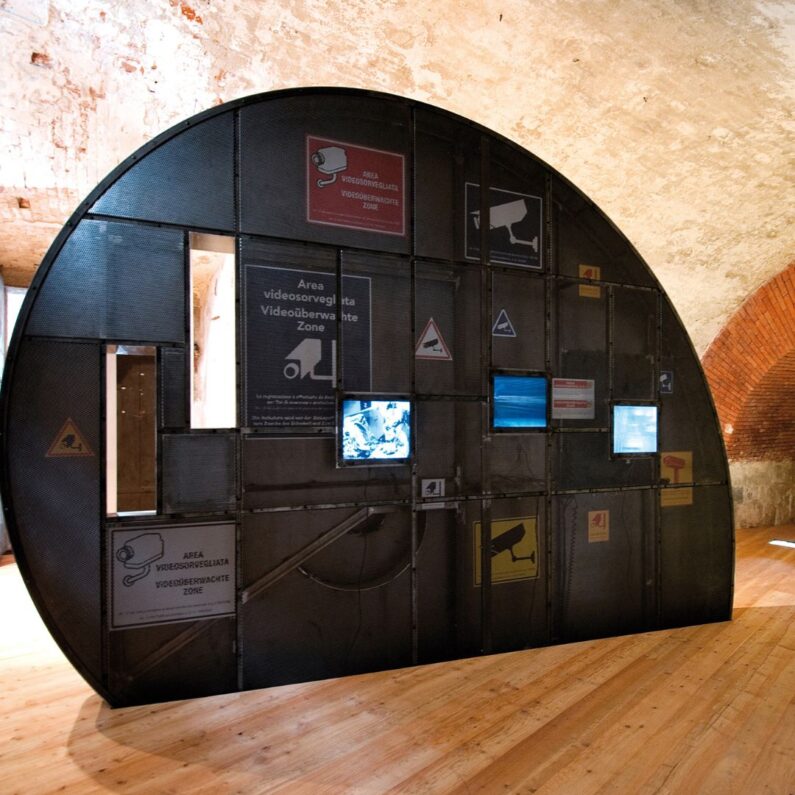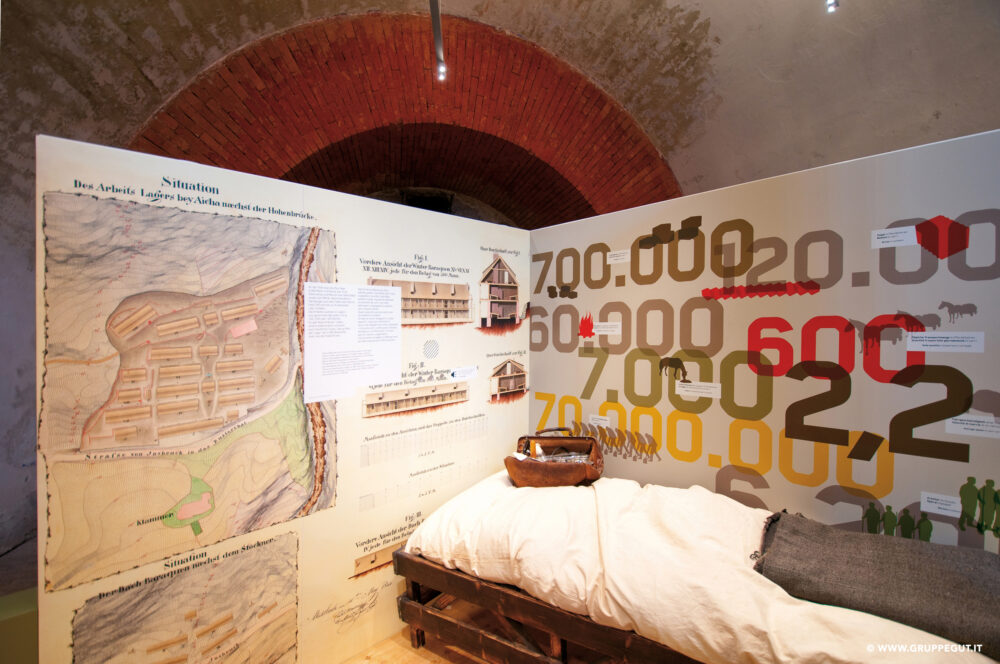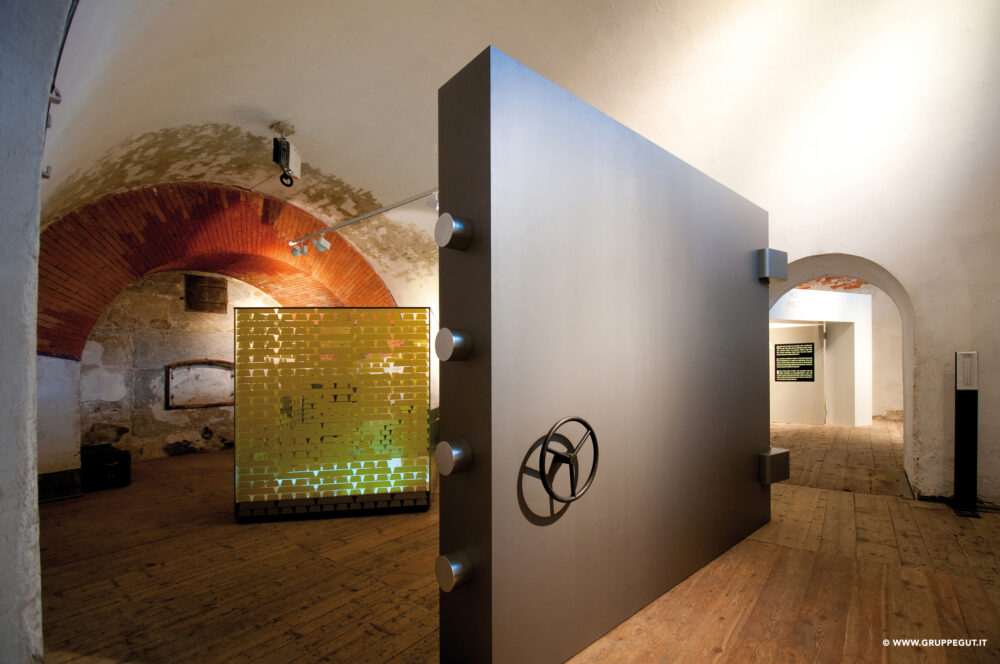The cathedral in the desert
Time period
from 12. April 2025
Location
Building 38

In seven casemates, the permanent exhibition Cathedral in the Desert tells stories and anecdotes about the huge Franzensfeste fortress, focussing in particular on the construction history of the huge complex and the impact that this building had on the surrounding area.
In addition to topics relating to the planning and construction of the military fortress in the first half of the 19th century, our exhibition also vividly illustrates the history of transport and gold storage at Franzensfeste.
Large parts of the fortress have been preserved almost unchanged to this day and can be viewed by interested visitors. But how did this gigantic fortress come to be built?
The July Revolution in Paris in 1830 and the subsequent freedom and nationalist movements in Europe forced Austria to control uprisings in its provinces of Lombardy and Veneto. This brought the issue of fortress construction into focus. Tyrol, as a strategically important axis between southern Germany and northern Italy, became the focal point of these plans. Franz von Scholl, who was already working on the federal fortress in Mainz, was commissioned to expand the Habsburg fortress quadrangle and build an entrenched camp on the Natz-Schabser plateau. The construction work, which began in 1833, was continued after the death of Franz I despite financial bottlenecks. The Franzensfeste was inaugurated by Emperor Ferdinand I in 1838 and was named after Prince-Bishop Galura of Brixen. Although it was never fully utilised for military purposes, it remains an imposing structure that still impresses today.
Even more than its structural and logistical masterpieces, Franzensfeste is known for its ‘glittering history’. In 1943, it was used to store 127.5 tonnes of Italian currency gold. Most of this gold was transported away by 1945, but the whereabouts of parts of the treasure led to speculation and adventurous stories for a long time. Today we know that the Franzensfeste preserves an important chapter of history, which is brought to life in our exhibition.















